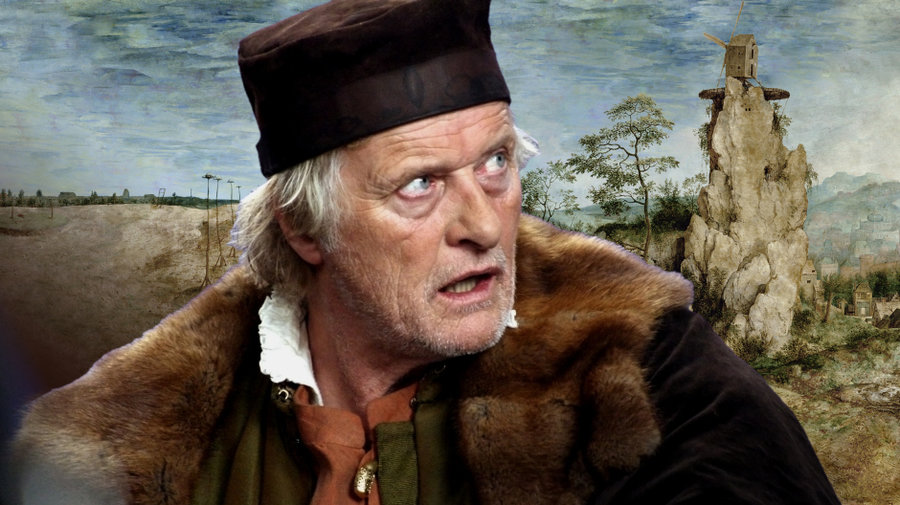
MPAA Rating: NR | Rating: ★★★★★
Release year: 2011
Genre: Drama, Foreign, History Director: Majewski
I’ve seen films about painters (Girl with a Pearl Earring) and films about painting (My Kid Could Paint That) and films about art (Exit through the Gift Shop, Summer Hours), but I’ve never seen a film about a painting. At least not like this one. The Mill and The Cross is based on Michael Francis Gibson’s book of the same name, which is an examination of Pieter Bruegel’s 1564 painting The Procession to Calvary.
It’s a film based on a book based on a painting based on a historical event.
The painting literally comes to life as Bruegel (Rutger Hauer) paints it. The brilliant imagery is stunning, particularly the opening panoramic shot of the entire painted landscape, filled with dozens of characters, all part of Bruegel’s world. While the narrative of The Mill and The Cross is minimalistic–Bruegel paints, the characters act out their parts–it is the imagery that kept me drawn into its world. Every single scene feels like it could be a painting itself. It is a visual piece of art that requires patience and study to fully appreciate. I’ll certainly have to watch the film again, just to take in some of the visuals I may have missed.
Bruegel’s painting juxtaposes the religious persecution occurring in Flanders with the passion of Jesus Christ, with the suffering Messiah at the center of the painting while the myriad of characters surround him and look on. Instead of the crimson-helmeted Romans, it is the red-jacketed Spanish militiamen who are persecuting the Christ. The face of Christ is never fully revealed, allowing one’s imagination to patch together brief glimpses into the full visage of the Savior. The titular mill towers above the scene, with the miller representing the Father, gazing down from the heavens on His creation. This “God” feels a bit distant, grinding away the grain in the mill while the other characters meander at the base of the mill. Only when the Messiah is finally crucified alongside the two criminals do we see the miller weeping in the shadows deep inside the mill, revealing His compassionate heart. When the thunderstorm comes after Christ’s death, it is a visual feast that provides a bit of catharsis from the brutal violence done to the innocent. Rather than conclude with the Christ’s resurrection, a surprising ending occurs–there is a dance, a celebration. It’s rather silly and childish, but it is sure to elicit a smile. In all this, Bruegel is a another God-figure–he is creating and forming and shaping his characters (including their pain and suffering) all to a redemptive end.
I realize that the above paragraph feels a bit scattered. I’m trying to describe the nuances of a painting, and that never satisfies. You simply have to see it for yourself. Any verbal description I can give will not do it justice. You must see, and upon seeing allow yourself to be changed.
That which was from the beginning, which we have heard, which we have seen with our eyes, which we have looked at and our hands have touched—this we proclaim concerning the Word of life. (1 John 1:1)
IMDB Listing: http://www.imdb.com/title/tt1324055/